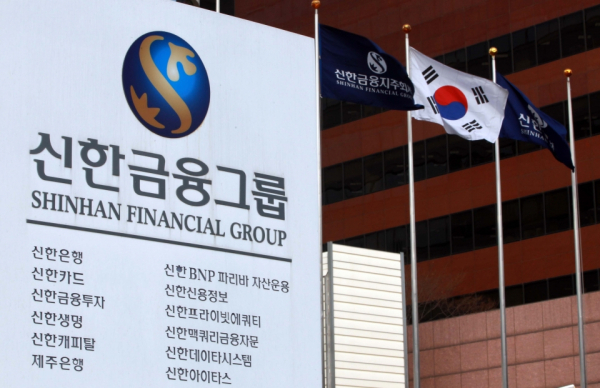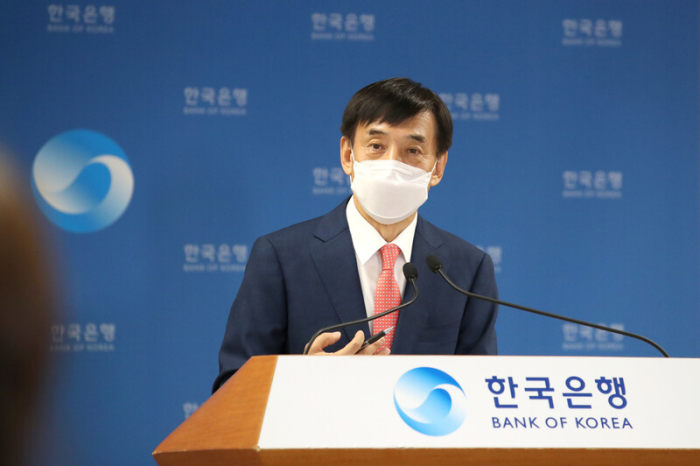Banking & Finance
KoreaŌĆÖs major banking groups post record-high earnings in H1
From KB, Shinhan, Hana to Woori and NH, the five major financial groups all posted the highest profit ever in H1
By Jul 27, 2021 (Gmt+09:00)
3
Min read
Most Read

South KoreaŌĆÖs major banking groups have posted the highest-ever net profit figures in the first half of this year.
Shinhan Financial Group reported on July 27 that its first-half net profit was 2.44 trillion won ($2.11 billion), the highest amount in the groupŌĆÖs history. The profit figure was up by 35.4% from the same period last year.
Driven by its strong performance, Shinhan is considering the introduction of a quarterly dividend payout system. Once the agenda is approved by its board members in August, it will be KoreaŌĆÖs first major banking group to pay dividends on a quarterly basis.
The group said its profit growth was largely driven by its banking unit, Shinhan Bank, whose profit in the given period increased by 20.2% from 2020, reaching 1.37 trillion won ($1.19 billion). Other business units including insurance, securities and credit cards also thrived with similar growth rates.
Shinhan FinancialŌĆÖs performance fell slightly short of its long-time rival and the industry leader KB Financial Group, which also posted the highest first-half earnings at 2.47 trillion won ($2.14 billion). ┬Ā
Earlier this year, other industry players including Hana Financial Group, Woori Financial Group, NH Financial Group and Industrial Bank of Korea have all posted their highest-ever first-half earnings.
Industry watchers said that the countryŌĆÖs banking sector could post record profit figures largely due to higher market interest rates this year.┬Ā
Moreover, they highlighted that the banksŌĆÖ net interest margins (NIM) have improved due to a higher portion of low-cost deposits fueled by more people putting their money into the banks.
Low-cost deposits are deposits that have ultra-low interest payments for the banks, such as demand deposits that typically have an interest rate of 0.1%. The higher the portion of low-cost deposits for the banks, the lower their operating cost.
Figures at the end of the second quarter show that KB BankŌĆÖs portion of low-cost deposits was 53.6%, up by 6.7 percentage points within a year, while that of NH Bank was 49.0%, up by 3.5% percentage points.
South Korean banks are projected to post strong results into the second half of 2021, as the central bank is likely to raise the benchmark interest rate.

ŌĆ£In case the Bank of Korea raises the benchmark rate in October, the domestic banksŌĆÖ NIM will increase significantly in the fourth quarter,ŌĆØ said a financial director at Woori Bank.
At the same time, however, experts note that the Korean banks need to further diversify their income portfolio. The worldŌĆÖs leading banking players such as Bank of America (BoA) and JPMorgan make the majority of their operating profit from non-interest income. BoA generates 52.1% of its operating profit from non-interest income, while JPMorganŌĆÖs portion is even higher at 58.0%.
On the other hand, however, Shinhan FinancialŌĆÖs figure is only 31.6%, Hana Financial 29.0%, KB Financial 25.1% and Woori Financial 9.4%. In other words, the vast majority of the Korean banksŌĆÖ profit is generated from loans.
ŌĆ£Korean banks need to diversify revenue streams, for instance by widening their scope of work to earn more transaction fees or raising the rate of transaction fee from their current work scope,ŌĆØ said Kim Woo-jin, a researcher at the Korea Institute of Finance.
Write to Nan-sae Bin at binthere@hankyung.com
Daniel Cho edited this article.
More to Read
-
 Alternative investmentsKookmin Bank to co-finance $840 mn US solar project
Alternative investmentsKookmin Bank to co-finance $840 mn US solar projectJul 22, 2021 (Gmt+09:00)
1 Min read -
 Central bankingBank of Korea sets stage for tightening after holding rates
Central bankingBank of Korea sets stage for tightening after holding ratesJul 15, 2021 (Gmt+09:00)
3 Min read -
 Banking & FinanceKorean banks enter digital asset custody market in quick succession
Banking & FinanceKorean banks enter digital asset custody market in quick successionJul 11, 2021 (Gmt+09:00)
3 Min read -
 Banking and financeNaver's Line Bank expands in Asia with Indonesian venture
Banking and financeNaver's Line Bank expands in Asia with Indonesian ventureJun 13, 2021 (Gmt+09:00)
3 Min read -
 Monetary policyBank of Korea governor sends stronger signal to raise rates this year
Monetary policyBank of Korea governor sends stronger signal to raise rates this yearJun 11, 2021 (Gmt+09:00)
3 Min read
Comment 0
LOG IN




